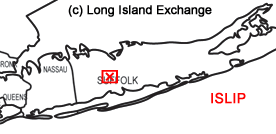 The Town of Islip is one of ten towns in Suffolk County, on the South Shore of Long Island, New York. It is also an unincorporated community or a hamlet within the Town of the same name.
The Town of Islip is one of ten towns in Suffolk County, on the South Shore of Long Island, New York. It is also an unincorporated community or a hamlet within the Town of the same name.
The Islip Train Station serves the community with hourly service west to New York City and east to the Hamptons via the Long Island Rail Road. It is also served by Sunrise Highway and the Southern State Parkway.
 Islip is on the Montauk Branch of the Long Island Rail Road, off NY 111 Islip Avenue and Nassau Avenue, north of Suffolk CR 50 Union Boulevard.
Islip is on the Montauk Branch of the Long Island Rail Road, off NY 111 Islip Avenue and Nassau Avenue, north of Suffolk CR 50 Union Boulevard.
As of the 2010 census, there were 18,689 people, 6,384 households, and 4,797 families residing in the CDP. The median income for a household in the CDP was $88,631, and the median income for a family was $100,293. Males had a median income of $67,936 and just $53,148 for females. The latitude of Islip is 40.729N. The longitude is -73.21W. It is in the Eastern Standard time zone. Elevation is 7 feet.
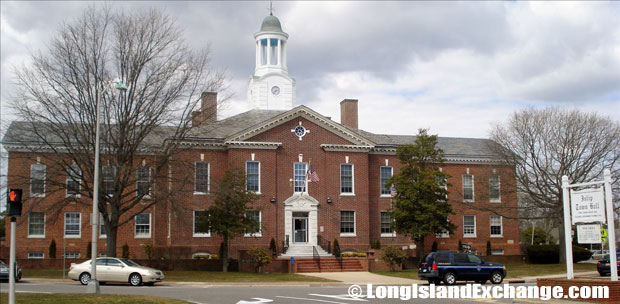 Islip Town Hall, is located in the heart of both the Town and Hamlet of Islip at 655 Main Street.
Islip Town Hall, is located in the heart of both the Town and Hamlet of Islip at 655 Main Street.
On November 29, 1683, an early settler named William Nicoll bought land from Sachem (Chief) Winnequaheagh of Connetquot. The community was named after Islip, Oxfordshire, England. In the 19th and 20th centuries, the area originated as a subsistence farming community in its earliest years transforming to a posh resort and mansion heavy enclave for aristocratic families.
 Trinity Lutheran Church held its first gathering on February 6, 1927 when eighty Christians, knowledgeable in the teachings of the Lord within the Lutheran tradition, gathered in a vacant store on Main St. Islip, New York.
Trinity Lutheran Church held its first gathering on February 6, 1927 when eighty Christians, knowledgeable in the teachings of the Lord within the Lutheran tradition, gathered in a vacant store on Main St. Islip, New York.
The original settlement encompassed Bayport, Bohemia, Brentwood, Central Islip, East Islip, Great River, Hauppauge, Holbrook, Holtsville, Islip Terrace, Oakdale, Sayville, West Sayville, and part of Ronkonkoma. Part of Nicoll’s original domain is now the site of the Heckscher State Park. Some early setters made their living raising grain and beef although Islip’s closeness to the water made fishing and shipping the primary way of life.
 Islip Veterans Memorial Park, Town of Islip.
Islip Veterans Memorial Park, Town of Islip.
Well-known residents have included J. Michael Plumb, an Olympic medalist. Most of the resident ancestries were Italian, Irish, German, Black or African American, and Puerto Rican. The community is served by the Islip Union Free School District which has three elementary schools, one middle school, and a high school.
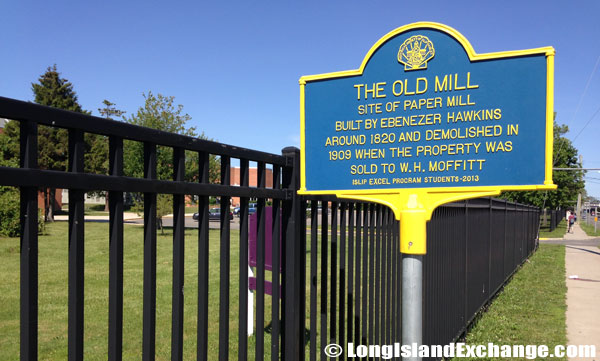 This historical marker highlights the spot where an old paper mill was located where Islip Middle School currently stands. The paper mill was built circa 1820 and demolished in 1909 when the property was sold.
This historical marker highlights the spot where an old paper mill was located where Islip Middle School currently stands. The paper mill was built circa 1820 and demolished in 1909 when the property was sold.
The district provides academic excellence towards their students and also develops their personal potentials. One of the town’s most important and precious assets is Long Island MacArthur Airport. It is located near the center of Long Island with an easy access from major highways and the only airport in Suffolk or Nassau County with scheduled service on major airlines and serves over two million passengers a year.
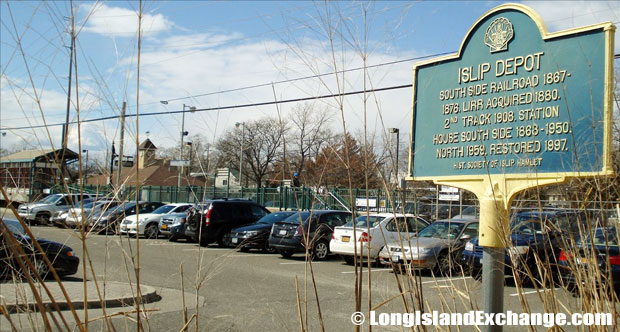 A historic plaque for Islip (LIRR station) along New York State Route 111 in Islip, New York. Islip Depot, South Side Railroad 1867-1876. LIRR acquired 1880. 2nd track 1908. Station house south side 1868-1950. North 1959. Restored 1997.
A historic plaque for Islip (LIRR station) along New York State Route 111 in Islip, New York. Islip Depot, South Side Railroad 1867-1876. LIRR acquired 1880. 2nd track 1908. Station house south side 1868-1950. North 1959. Restored 1997.
The town has several churches including Presbyterian, Episcopal, Apostle, and Methodist that all have a combination of beautifully made architecture and devotional services. Brookwood Hall Park, the Islip Art Museum, and Heckscher State Park are also near by.
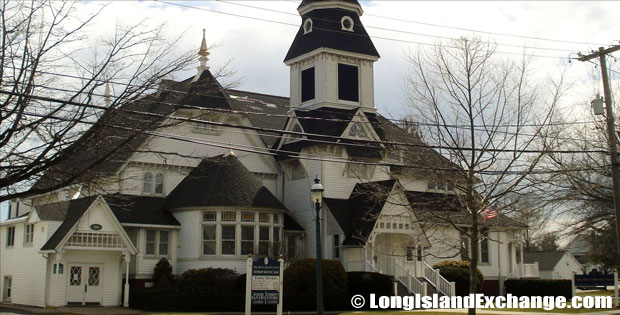 United Methodist Church of Islip, 350 Main Street, Islip. Services: Sundays at 8, 9:30 & 11. Sunday School at 9:30.
United Methodist Church of Islip, 350 Main Street, Islip. Services: Sundays at 8, 9:30 & 11. Sunday School at 9:30.
The local Chamber of Commerce which is founded in 1924 help makes Islip a better place in which to live and work. Their goal is to promote and encourage public improvements and commerce, support industry, adjust disputes relative to trade, transportation and navigation, and many more.
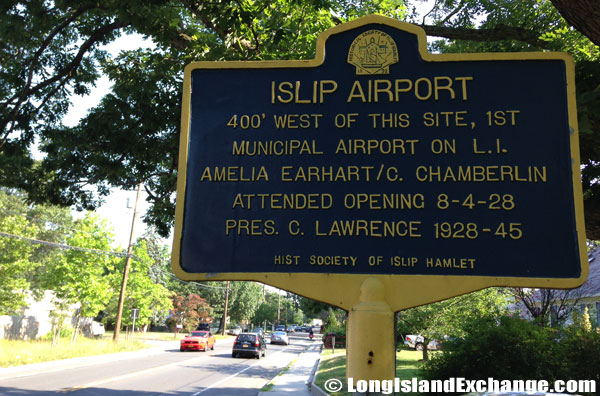 A historical marker commemorating the original Islip Airport, a 25 acre general aviation airport established by Charles Lawrence in 1928 and located along Route 111 Islip. Its dedication ceremony was attended by Amelia Earhart, the first female aviator to fly solo across the Atlantic Ocean. She received the U.S. Distinguished Flying Cross.
A historical marker commemorating the original Islip Airport, a 25 acre general aviation airport established by Charles Lawrence in 1928 and located along Route 111 Islip. Its dedication ceremony was attended by Amelia Earhart, the first female aviator to fly solo across the Atlantic Ocean. She received the U.S. Distinguished Flying Cross.
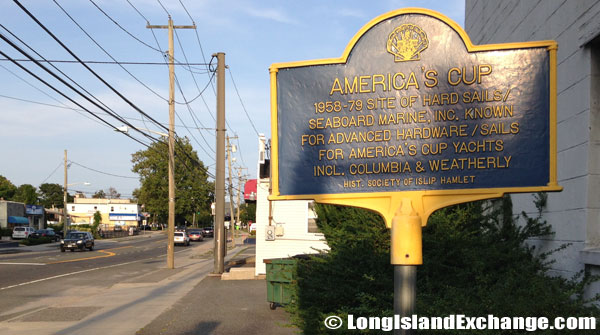 Many Islip baymen won yacht racing fame in the world’s most prestigious sailboat race the America’s Cup.
Many Islip baymen won yacht racing fame in the world’s most prestigious sailboat race the America’s Cup.
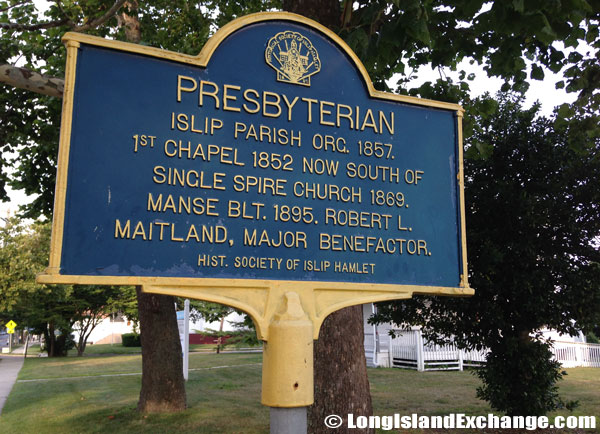 The First Presbyterian Church of Islip and Huntington South.
The First Presbyterian Church of Islip and Huntington South.
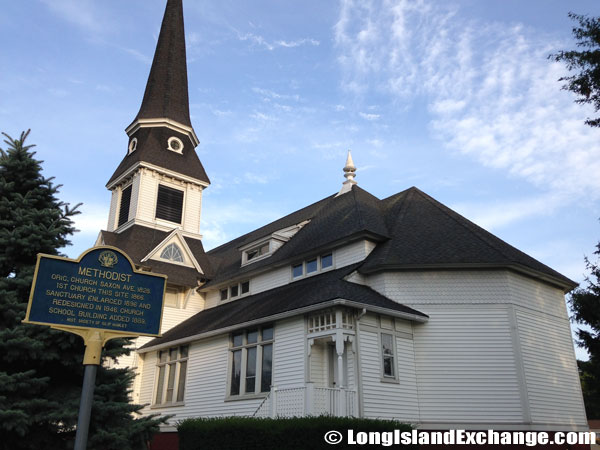 The Methodist Church in Islip village dates from 1810, although the first church was not erected until 1828.
The Methodist Church in Islip village dates from 1810, although the first church was not erected until 1828.




